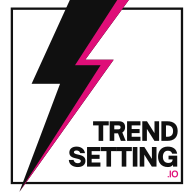What Unconventional Methods Can Be Used to Research Consumer Attitudes?
In the ever-evolving landscape of brand strategy, we've tapped into the minds of Brand Strategists and Associate Strategy Directors to uncover unconventional methods for researching consumer attitudes. From implementing audience language analysis to analyzing authentic customer reviews, discover the unique techniques shared by four industry experts.
- Implement Audience Language Analysis
- Engage in Informal Conversations
- Deep-Dive into Social Media Insights
- Analyze Authentic Customer Reviews
Implement Audience Language Analysis
In branding, there is power in understanding the emotional landscape of the consumer; that's why we use tools like empathy mapping to gain clarity on this landscape. Beyond mapping out their emotions before they purchase, we like to map out their emotions after the transaction or conversion to understand what is the transformation or promise of the brand. Although powerful, these tools are built on a lot of assumptions and educated guesses.
I found myself wanting to move away from assumptions and closer to the heart of the end user. This led me to implement a process based on language. One of the first documents I built is called 'Audience Language.' Mind you, it's not the most creative name out there, or the most complex document, but it accomplishes an important role.
This document is a repository for words and expressions the consumer utilizes to describe—with their own words—what we could only assume before. In essence, it is quite simple. It would contain expressions you hear in sales calls, reviews clients leave online, comments you hear in person at events and conventions, feedback, testimonials, and more. So far, so good. Using AI to organize all of these comments allows me to find patterns and intentions towards the brand very easily. But consider a step deeper. Building a community around your industry and your brand allows you to ask questions that will then trigger the language you are looking for.
Not only can you create your own community, but you can also join other communities where you can ask questions. What I have found in the last decade is that there is power in asking questions.
So find more places where you can ask them. And if you can't find them, create them.

Engage in Informal Conversations
As a strategist with an anthropology background, I've always been most interested in informal conversations—in what you can learn about a person and how they see themselves and their culture in a casual chat. Yes, there are tons of research tools, vendors, and methodologies out there that are scientific, generalizable, and statistically significant. But what I find most fun is just an informal conversation with a stranger, a real person, not a faceless survey response. At a bar, or a grocery store, or in the concessions line at halftime during a soccer match, wherever. Bonus points if it's a place relatively close to the point of purchase or decision-making process. I think the world is running toward AI and the next tech thing, but really, we should be running to people.
Deep-Dive into Social Media Insights
When it comes to researching consumer attitudes toward brands, we sometimes take a less traditional route. For example, we know how valuable social listening is, but we tend to deep-dive (which may be one of our core values) into social media to uncover the insights embedded in the chatter. We want to know which specific pieces of content they're sharing and saving, and we want to know what they're actually saying in the comments. Are they commenting on their experiences with the brand, the humor of the content, or does the content resonate with them in another way? We also keep an eye on what our competitors (and our clients' competitors) are doing to help us understand the bigger picture. Take the recent buzz around edgy content for CeraVe - even before the collaboration with Michael Cera, CeraVe was really leaning into interest-graph content. This is the most entertaining content, and that kind of content gets more visibility in feeds, and it demonstrates that being real and relatable can really strike a chord with consumers. The last thing you want to know is who you're talking to (or who in the audience is listening) so that we can tailor our approach to the vibe in the audience because knowing that Gen Z prioritizes authenticity while Gen X craves trust and education can make or break your campaign.

Analyze Authentic Customer Reviews
Customer reviews are a great way to truly understand what the general consumer attitude is toward a brand or category. Simply using Google reviews, Reddit, or other review sites is an easy way to see an authentic view of consumer pain points. And while not so unconventional anymore, ChatGPT can be used in ways to further understand attitudes toward brands and understand their point of view.

